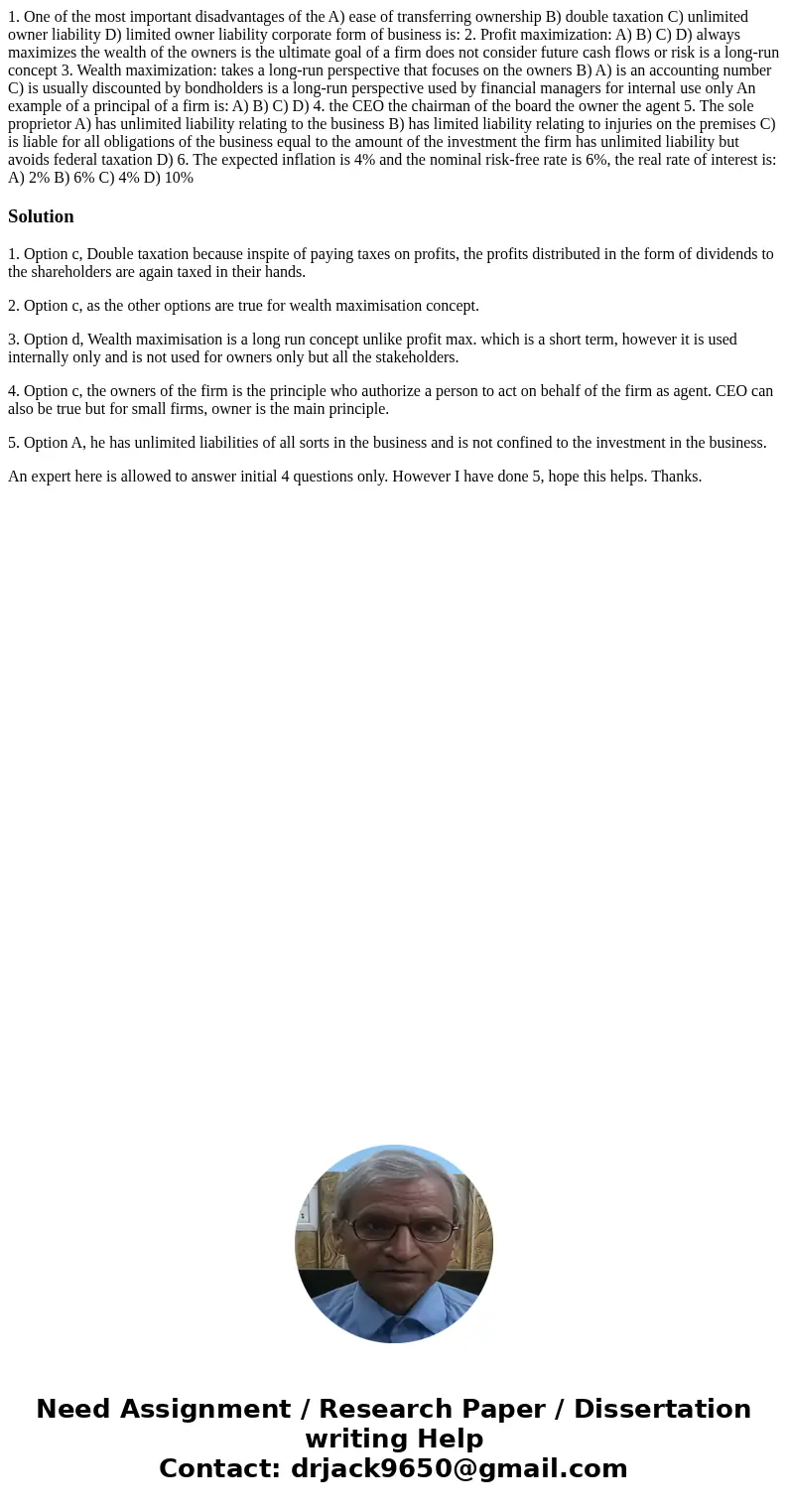1. One of the most important disadvantages of the A) ease of transferring ownership B) double taxation C) unlimited owner liability D) limited owner liability corporate form of business is: 2. Profit maximization: A) B) C) D) always maximizes the wealth of the owners is the ultimate goal of a firm does not consider future cash flows or risk is a long-run concept 3. Wealth maximization: takes a long-run perspective that focuses on the owners B) A) is an accounting number C) is usually discounted by bondholders is a long-run perspective used by financial managers for internal use only An example of a principal of a firm is: A) B) C) D) 4. the CEO the chairman of the board the owner the agent 5. The sole proprietor A) has unlimited liability relating to the business B) has limited liability relating to injuries on the premises C) is liable for all obligations of the business equal to the amount of the investment the firm has unlimited liability but avoids federal taxation D) 6. The expected inflation is 4% and the nominal risk-free rate is 6%, the real rate of interest is: A) 2% B) 6% C) 4% D) 10%
1. Option c, Double taxation because inspite of paying taxes on profits, the profits distributed in the form of dividends to the shareholders are again taxed in their hands.
2. Option c, as the other options are true for wealth maximisation concept.
3. Option d, Wealth maximisation is a long run concept unlike profit max. which is a short term, however it is used internally only and is not used for owners only but all the stakeholders.
4. Option c, the owners of the firm is the principle who authorize a person to act on behalf of the firm as agent. CEO can also be true but for small firms, owner is the main principle.
5. Option A, he has unlimited liabilities of all sorts in the business and is not confined to the investment in the business.
An expert here is allowed to answer initial 4 questions only. However I have done 5, hope this helps. Thanks.

 Homework Sourse
Homework Sourse